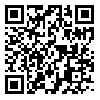BibTeX | RIS | EndNote | Medlars | ProCite | Reference Manager | RefWorks
Send citation to:
URL: http://hnmj.gums.ac.ir/article-1-601-en.html
2- Social Determinants of Health Research Center (SDHRC), Department of Midwifery, Associate Professor, Guilan University of Medical Sciences, Rasht, Iran. ,
3- Social Determinants of Health Research Center (SDHRC), Department of Nursing, Instructor, PhD Candidate in Gerontology, School of Nursing and Midwifery, Guilan University of Medical Sciences, Rasht, Iran.
4- Biostatistics, Assistant Professor, School of Medicine, Guilan University of Medical Science, Rasht, Iran.
Introduction: The bio psychosocial phenomenon of substance abuse in adolescents is one of the most critical issues in today’s society. One of the most important concerns regarding social and health policies is the increasing prevalence of addictive behavior, especially smoking in this age group.
Objective: To assess the relationship between aggression and addiction tendency among students of Guilan University of Medical Sciences (GUMS) in Iran.
Materials and Methods: In this analytical cross-sectional study, 280 students of GUMS were randomly selected. Data collection tool had three parts: demographic characteristics survey, Ahvaz Aggression Questionnaire (AAQ), and addiction tendency inventory in Persian. Data analysis was performed using descriptive statistics and the Pearson correlation coefficient test.
Results: The mean±SD age of the students was 21.75±2.90 years [range 18-38 years]. About 14.3% of the students had addiction tendency, and 32.5% had high aggression levels. There was a significant statistical relationship between addiction tendency and aggression with age, sex, marital status, educational level, housing location, employment, education and occupation of parents, monthly income, and socializing with friends (P=0.0001, r=0.52).
Conclusion: The results of this study indicated an association between aggression and addiction tendency in students. The counseling centers of universities can provide student training on how to control aggression in different situations, and thereby prevent them from abusing drugs.
Received: 2016/01/5 | Accepted: 2016/02/8 | Published: 2018/06/15
| Rights and permissions | |
 | This work is licensed under a Creative Commons Attribution-NonCommercial 4.0 International License. |






